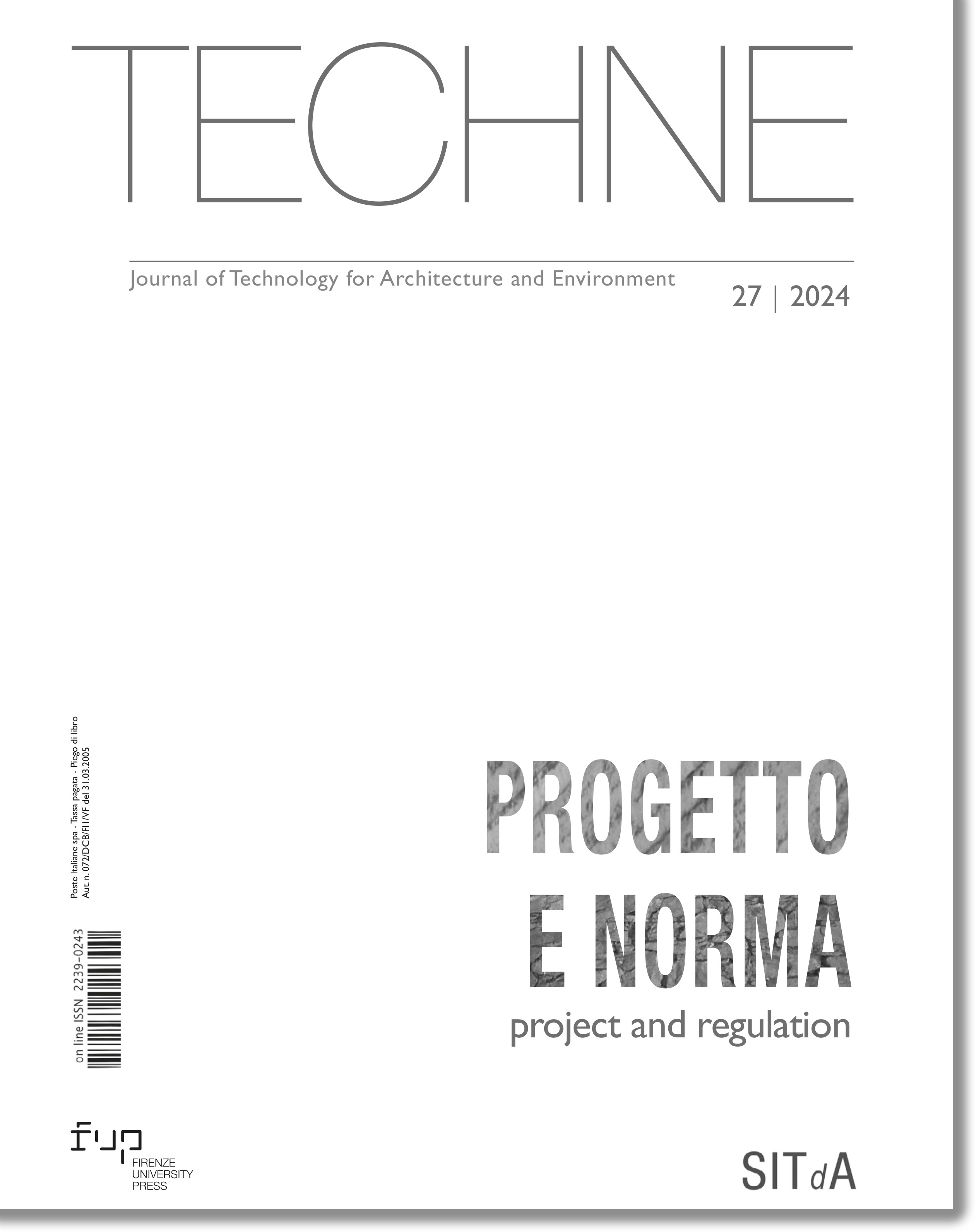Published 2024-06-10
Keywords
- Pocket park,
- Climate mitigation,
- Nature-based Solutions,
- Climate change,
- Biodiversity
- Urban Regeneration ...More
How to Cite
Copyright (c) 2024 Rosa Romano, Antonia Sore, Eleonora Di Monte

This work is licensed under a Creative Commons Attribution 4.0 International License.
Abstract
This paper shows some results of the research activities carried out in the spoke five of the National Biodiversity Future Center aimed at testing the effectiveness of urban regeneration projects, including the creation of Pocket Parks as adaptation strategies to climate change. The methodological approach adopted to validate the design of small scale resilient urban spaces implemented by the Municipality of Florence will be presented starting from the definition of state-of-the-art. Furthermore, it will analyse how the meta-planning model (based on the integration of NbS) and the predictive tools used in the experimentation can be used to develop future regulatory tools for planning and controlling the transformation of the built environment.
Downloads
References
- Dong, J., et al. (2023), “Pocket Park – a systematic literature review”, Environmental Research Letters, Vol. 18, n. 8. Available at: https://iopscience.iop.org/article/10.1088/1748-9326/ace7e2 (Accessed on 11/09/2023). DOI: https://doi.org/10.1088/1748-9326/ace7e2
- European Environment Agency (2020), Urban adaptation in Europe: How cities and towns respond to climate change. Available at: https://www.eea.europa.eu/publications/urban-adaptation-in-europe (Accessed on 11/09/2023).
- Hamdy, M. and Plaku, R. (2021), “Pocket Parks: Urban Living Rooms for Urban Regeneration”, Civil Engineering and Architecture, Vol. 9, n. 3, pp. 747-759. Available at: https://www.hrpub.org/journals/article_info.php?aid=10800 (Accessed on 11/09/2023). DOI: https://doi.org/10.13189/cea.2021.090316
- Macintyre, H.L., et al. (2018), “Assessing urban population vulnerability and environmental risks across an urban area during heatwaves – Implications for health protection”, Science of The Total Environment, Vol. 610–611, pp. 678-690. Available at: https://www.sciencedirect.com/science/article/abs/pii/S0048969717320600?via%3Dihub (Accessed on 11/09/2023) DOI: https://doi.org/10.1016/j.scitotenv.2017.08.062
- MUR (2023), National Biodiversity Future Center - NBFC, Available at: https://www.mur.gov.it/sites/default/files/2022-10/Scheda%20di%20progetto%20-%20CN%204.pdf (Accessed 01/07/2023).
- Rosso, F., Cappa, F., Spitzmiller, R. and Ferrero, M. (2021), “Pocket parks towards more sustainable cities. Architectural, environmental, managerial and legal considerations towards an integrated framework: A case study in the Mediterranean region”, Environmental Challenges, Vol. 7. Available at: https://www.sciencedirect.com/science/article/pii/S2667010021003760?via%3Dihub(Accessed on 11/09/2023). DOI: https://doi.org/10.1016/j.envc.2021.100402
- United Nations (2015), 2030 Agenda for Sustainable Development. Available at: https://sustainabledevelopment.un.org/content/documents/21252030%20Agenda%20for%20Sustainable%20Development%20web.pdf (Accessed on 11/09/2023).






